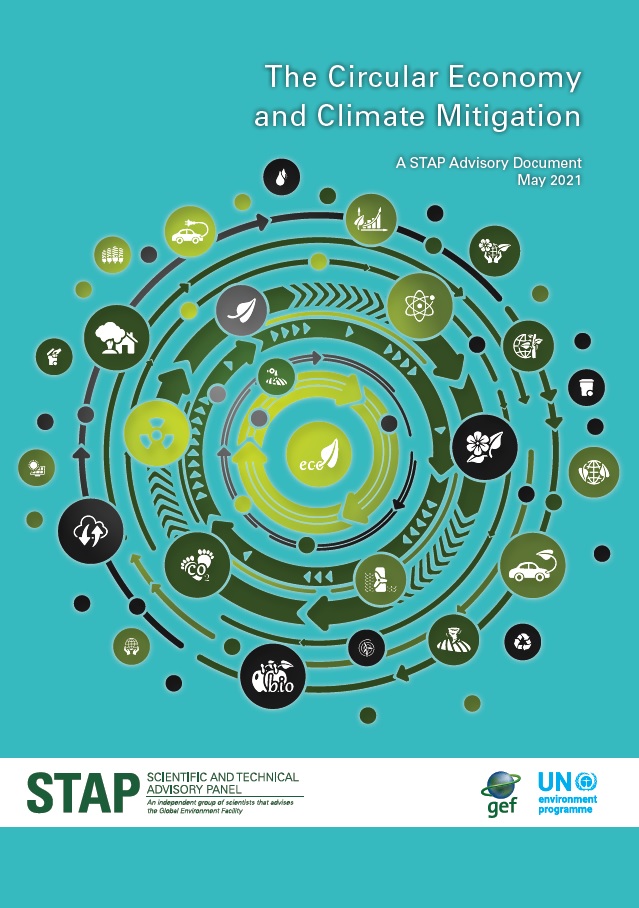Advice
Showing 16 - 30 of 56
56 results found
Increasing the impact of GEF investments requires a vision of knowledge management and learning (KM&L) that treats KM as an integral part of the GEF’s business, not as a separate process. STAP suggests that articulating this vision requires a theory of change to guide the development of a new KM&L strategy for GEF-8. This brief sets out five pathways to achieve this: governance and leadership; durable learning; empowerment and exchange; design and application; and tracking and adapting.
This STAP brief presents STAP thinking on the use of simple future narratives to design resilient and durable projects. It highlights the importance of considering all drivers of change, such as population, conflict, climate change, and migration, when designing projects. The brief shows that not considering how drivers of change could play out in the future can make project outcomes short-lived, less resilient, or even damaging to the environment and people.
The GEF seeks transformative investments to deliver systemic change and durable global environmental benefits. What qualifies as a transformative goal should be clearly specified and plausible.
Natural Capital can be defined as the world’s stocks of natural assets and resources providing a wide range of services, often called ecosystem services, that make human life possible.
In GEF-8, the GEF is seeking transformational change in several global systems, including natural ecosystems, as well as food, energy, and urban systems. Systems change requires greater innovation to explore new ways of delivering global environmental benefits at scale to achieve more impact. Such innovation often entails greater uncertainty, with a higher likelihood of failure, than is associated with tried and tested approaches, which may be more reliable but insufficient to deliver change at the pace and scale required.
Co-benefits in the GEF are defined as any positive effect that an intervention aimed at one environmental objective might have on other objectives. Co-benefits are also commonly referred to in the GEF as those benefits that are not GEBs, such as improved livelihoods.
For the GEF, policy coherence can be defined as an approach to integrate environmental objectives in domestic policy-making by: fostering synergies, maximizing benefits, and managing trade-offs across economic, social and environmental policy areas; and balancing domestic policy objectives with commitments under the multilateral environmental agreements (MEAs).
Adaptation projects specifically benefit from having a clear rationale, with particular attention on four main elements: the presence of worsening climate hazards, ei
International attention to opportunities in the blue economy is growing. But this increased attention is marked by diverse underlying assumptions and by inadequate attention to the important trade-offs and risks these investments often entail.
This paper builds on the three circular economy reports STAP has produced to date. They will help the GEF plan, design, and implement future circular economy projects.
This paper looks at the experience of South–South cooperation (SSC) for knowledge exchange (KE) in the Global Environment Facility (GEF) and its Agencies, and in other institutions, to elucidate what has been learned and what challenges exist and, at the CEO’s request, to make recommendations for GEF-8 programming.
This paper synthesizes the main elements of STAP’s process-oriented advice. This advice provides eight enabling elements to help ensure the success of GEF investments. It highlights the eight enabling elements and illustrates how adopting them will “de-risk” project and programme design and increase the likelihood of delivering durable outcomes that contribute to transformational change.
The GEF aims to facilitate enduring and transformative change that delivers global environmental benefits which are resilient to future shocks and stresses that may otherwise undermine them. Applying resilience thinking and a simple scenario-based approach to known future risks can help GEF investments produce more resilient outcomes.

A significant aspect of today's climate change degradation is linked to materials extraction, processing, use, and disposal. Hence, the circular economy offers an opportunity to tackle climate change and deliver other environmental and socioeconomic benefits by ensuring that focusing on maintaining resources in use for as long as possible, extracting the maximum value while in use, and recovering and recycling products and usable materials at the end of their serviceable life.
The GEF's chemicals and waste focal area's objectives are strongly interlinked with those of other focal areas. The production, use, and management of persistent organic pollutants (POPs), mercury, ozone-depleting substances (ODS) are major drivers of biodiversity loss, climate change, land degradation, and impact on international waters. Chemicals and waste are also interlinked with socio-economic issues, including human health, food security, poverty, gender equality, and economic improvements.
Showing 16 - 30 of 56




